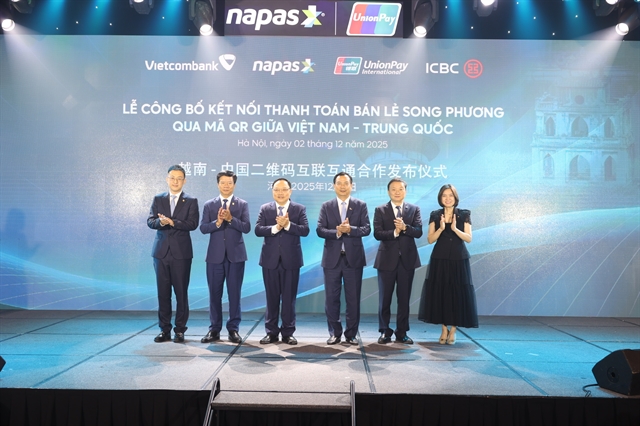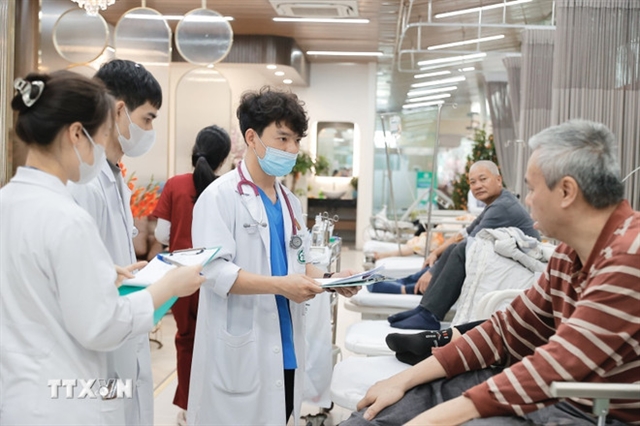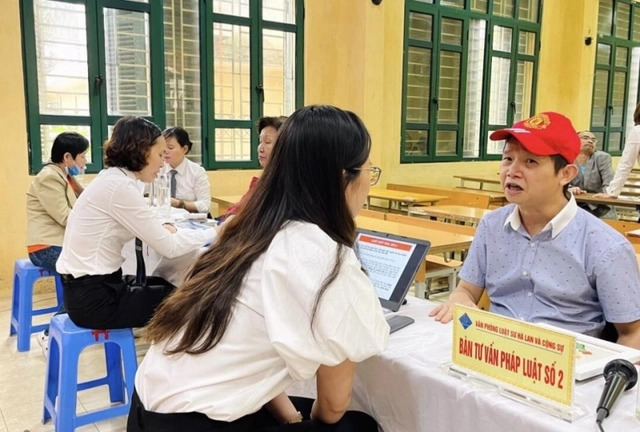 Opinion
Opinion

 |
| Nguyễn Trí Ngọc, general secretary of the Agriculture and Rural Development Association. Photo VNS Tố Như |
Links among the State, banks, scientists, businesses and farmers are essential for green and sustainable agriculture in the context of a deeper international integration process. Việt Nam News reporter Tố Như talks with Nguyễn Trí Ngọc, general secretary of the Agriculture and Rural Development Association, about the issue and solutions for strengthening the linkage.
Could you explain the advantages of “five-party linkage” for sustainable agriculture in Việt Nam?
In the context of deeper economic international integration, linkage in agriculture production is irreversible.
Towards sustainable agricultural production, the role of such links must be defined more clearly and deeply to boost the value of the agricultural sector in the process of economic integration.
Therefore, these linkages must be more intensive to meet the increasing economic scale of Việt Nam's agriculture sector. And the process itself helps to solve the conflicts arising from the international integration process.
Additionally, capital sources, market scale and product quality should be considered. The links open deeper dialogues and cooperation among the State, banks, scientists, businesses and farmers towards a key objective of green and sustainable agriculture.
Many businesses and individuals are paying attention to investing in organic agriculture production. How should this be developed to create added value for parties participating in the production chain?
We are talking about developing a sustainable agriculture that must be green in an organic way. This is truly a demand of the markets, globally as well as domestically.
Organic products must have clear and transparent origin and for that, all of its standards must also be clear and transparent.
This is a process that needs participation of the five parties, of which the role of State management is crucial because the State orients the sustainable development of the agricultural sector.
Making five-party linkage in green production is very difficult but not an impossible mission, and is a necessity in the current context. In recent years, the model has been gradually re-shaped, with several typical examples affirming clear effectiveness.
From a fragmented, small-scale production lacking stable output, capital and technology, Việt Nam’s agriculture is transforming strongly thanks to the strategic cooperation among the five parties.
The nature of the linkage is that State issues policies and regulations, banks provide green credits, scientists transfer technologies, businesses invest in material areas and purchasing products, and farmers changing to advanced agriculture.
The banking system has been enhancing green credits for agricultural development as a core objective in their action plans through regularly reviewing and completing legal framework on banking operation and credit provision so as to support all economic sectors taking part in agriculture and rural development.
The banking system has also promptly issued instructions and directed the implementation of credit programmes and policies in the sector, as well as introduce solutions to review and simplify loaning procedures to create favourable conditions for customers to access credit.
.jpg) |
| By 2030, the area under high-quality and low-emission rice cultivation will reach one million hectares. Photo chinhphu.vn |
Green agriculture is attached to reduced greenhouse gas (GHG) emissions. How do you evaluate the cohesion, and how should fertiliser use be instructed to contribute to reducing such emissions?
The cohesion between green agriculture and reducing GHGs is a reciprocal one. It means green agriculture without reduced emission will not be effective.
The implementation of one million hectares of high-quality and low GHG-emitting rice is an example. Obviously, if we want to develop rice cultivation in a green, clean and safe direction but not associated with reducing emissions, all solutions from techniques, varieties and seasons to purchasing and processing will be ineffective, and the production will not bring incomes to farmers and businesses.
Fertilisers contribute a substantial amount of added value to the cultivation industry. Those that account for 40-60 per cent of input of the industry have a great impact on green and sustainable agriculture in general and cultivation in particular. So, effective use of fertilisers is a vital issue.
Fertilisers are currently used in a very wasteful manner, both in terms of input value and environmental impact including soil, water and agricultural production environment.
Agriculture businesses and farmers have faced many difficulties in approaching green credits. What are the solutions provided to help businesses and farmers get easier access to them?
Capital is an important and decisive factor for developing green and sustainable agriculture.
Agriculture is a vulnerable production sector and most agricultural businesses are of medium or small scale with modest capital. So, they cannot work without financial sources, let alone sustainably develop.
There are many solutions for businesses and farmers accessing green credits, but one of the most important solutions is to improve banks’ responsibilities for green agriculture. Meanwhile, businesses and farmers have responsibilities to effectively use the capital.
The development of an advanced, sustainable and climate-resilient agricultural ecosystem is not only the responsibility of farmers, but also of businesses, particularly financial institutions.
For instance, Nam Á Bank has set out major strategic directions which include utilising inclusive finance and green credit, supporting digital transformation for farmers via an open banking ecosystem and fostering value chain links between farmers, businesses, banks and markets.
Reducing GHG emissions in agriculture, and in the fertiliser industry in particular, is a critical task in responding to climate change. Emission reduction solutions in this area involve both production and usage. Many urea manufacturers worldwide and in Việt Nam now recover CO₂ from emissions during production to make urea.
When all five stakeholders cooperate, take joint responsibility, and share the same commitment, there is hope that Việt Nam's agriculture can truly move towards a green and sustainable future. VNS




